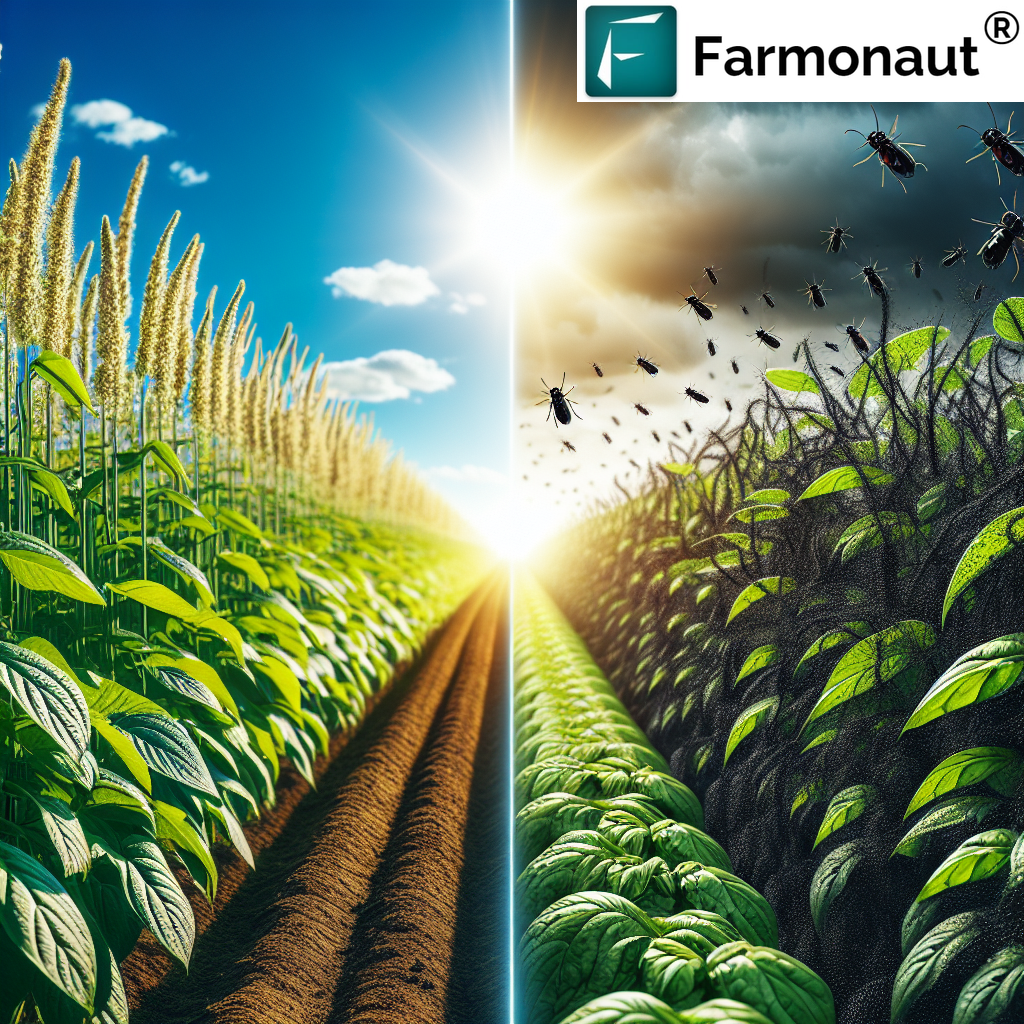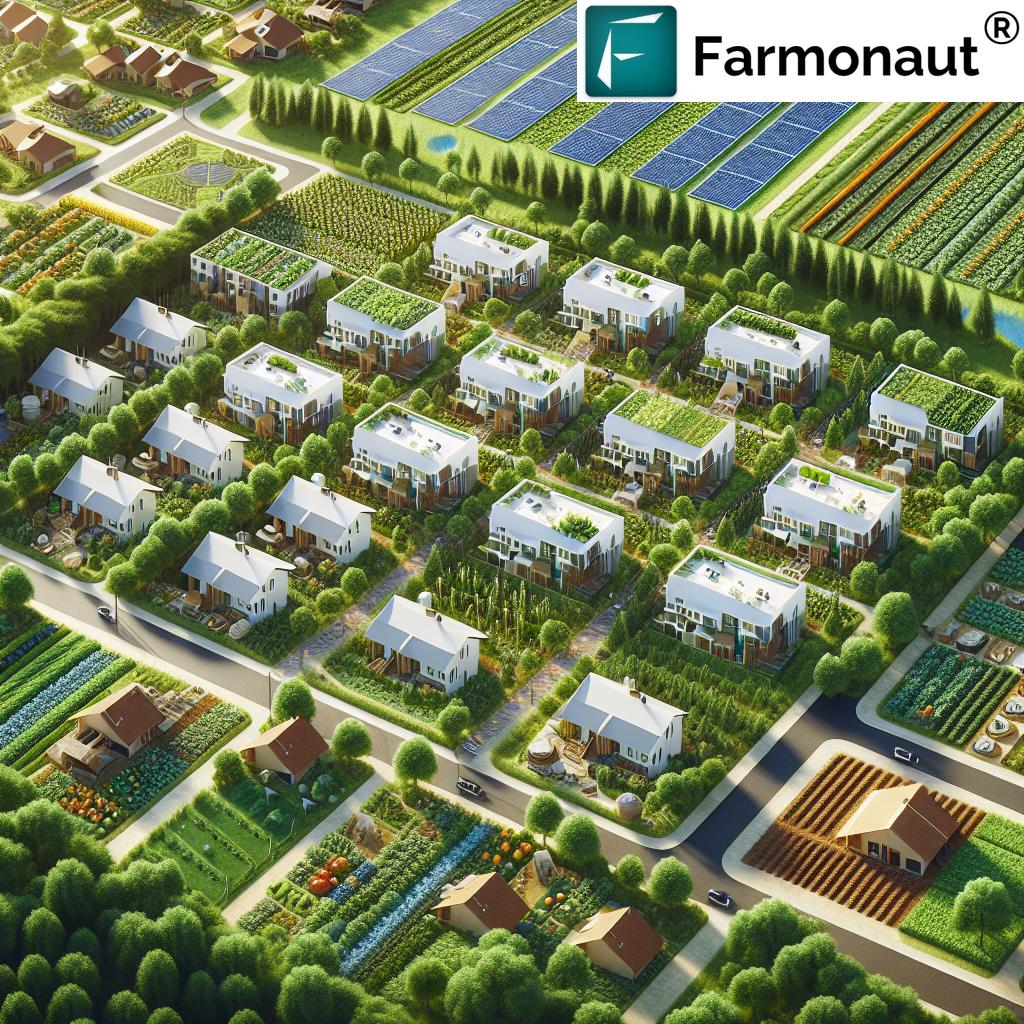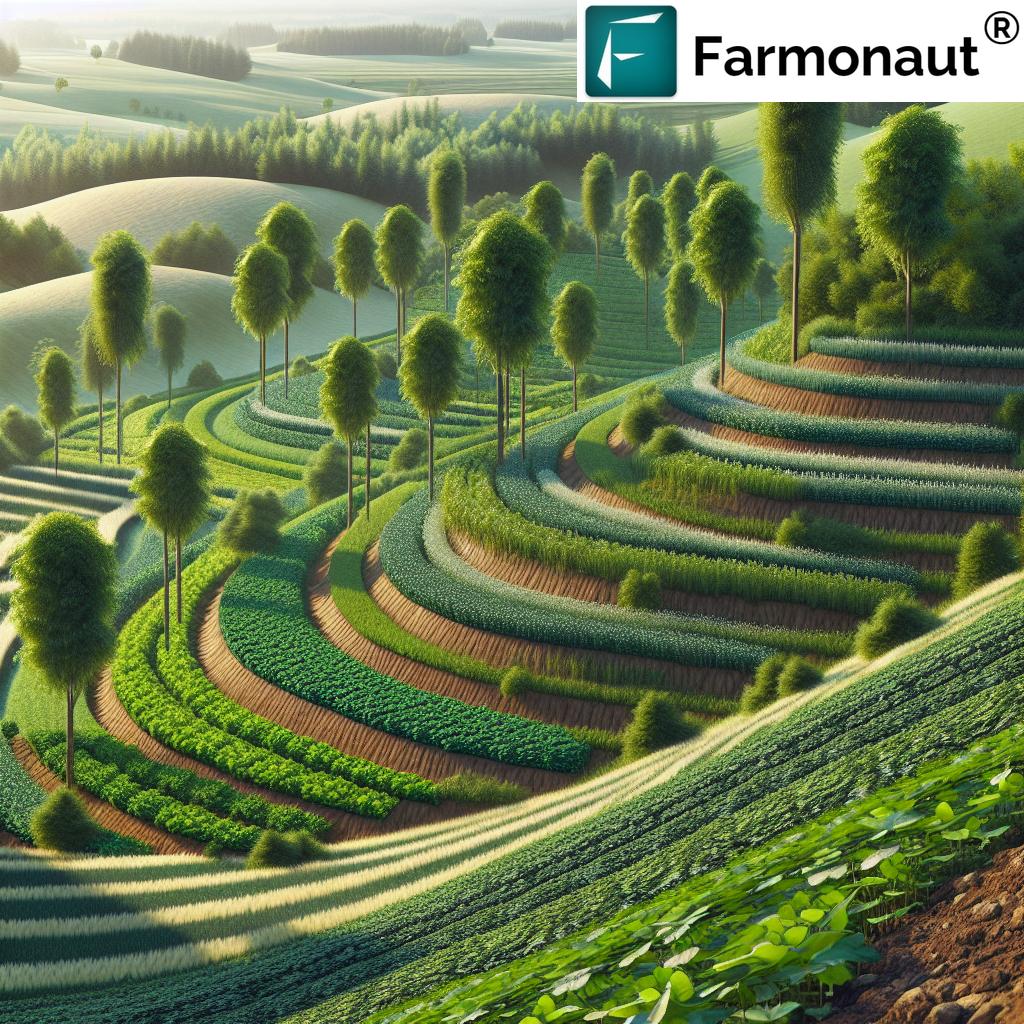Intermediate Farm Machinery Grants & Top Trade Innovations
Meta Description: Explore intermediate farm machinery, farm machinery grants, and innovations in trade and dairy farm machinery for sustainable agriculture in 2025. Enhance efficiency and drive forward-thinking practices in modern farming.
Quick Trivias: Grants & Dairy Farm Machinery
“Over 60% of 2025 farm machinery grants focus on intermediate machines for mid-scale sustainable agriculture upgrades.”
Introduction: The 2025 Farm Machinery Landscape
As we advance into 2025, the landscape of agriculture continues to evolve rapidly, driven by increasing emphasis on sustainability, efficiency, and deepening technology integration. Farm machinery—from intermediate farm machinery advancing small to medium-scale operations, to trade farm machinery powering industrial-size farms, and dairy farm machinery optimizing livestock practices—plays a pivotal role in transforming the sector.
The sector is encountering a wave of significant innovations and opportunities, especially as government grants and rising demand underscore the adoption of more sustainable and specialized equipment. In this detailed exploration, we’ll map out how the new generation of machines is shaping both large and small farms, what farm machinery grants mean for accessibility, and how specialized dairy technologies are reshaping efficiency and animal welfare.
Intermediate Farm Machinery in 2025: Bridging Small Farms & Technology
What Is Intermediate Farm Machinery?
Intermediate farm machinery refers to a new class of equipment that strikes a balance between affordability, efficiency, and versatility. These machines cater primarily to small and medium farms which form the backbone of global agriculture—especially in developing regions in Asia, Africa, and Latin America.
These technologies are tailored and designed to fit the operational needs of mid-size farms looking to modernize without the enormous capital investment demanded by high-end commercial equipment.
Key Features of 2025’s Intermediate Machinery
- Compact tractors and modular tillers: Highly maneuverable and suited for irregular plots or limited acreage.
- Multipurpose harvesters: Adaptable for various crops and seasonal requirements, maximizing year-round productivity.
- Smart controls & sensors: Machines are now increasingly equipped with fuel-optimizing sensors, GPS auto-guidance, and tools to minimize soil compaction and increase precision.
- Telematics integration: Enables real-time machine monitoring and maintenance reminders via mobile devices or web dashboards.
- Energy efficiency: Prioritizes hybrid and electric alternatives, supporting lower environmental footprints.
These new capabilities enable small farmers to adopt precision agriculture techniques—previously only available in larger commercial contexts—bringing the benefits of data-driven farming to a wider global base.
Trends & Innovations in Intermediate Farm Machinery
-
Sensor-driven irrigation:
Soil moisture sensors directly linked to modular tillers assist farmers in optimizing water use, reducing waste, and minimizing soil compaction.
-
Modular design:
Many 2025 machines are modular, allowing add-ons and upgrades as budgets grow, without requiring new purchases.
-
Precision planting:
Automated precision seeders ensure optimal seed placement, improving crop yields and minimizing resource use—directly contributing to sustainability goals.
Overall, this segment of intermediate farm machinery is witnessing significant advances that enhance productivity and environmental stewardship—two values shaping agriculture for 2025 and beyond.
Watch: 2025 Agri Business Trends for Sustainable Growth
Trade Farm Machinery: Empowering Large-Scale Agriculture
For commercial farms and industrial-scale production, trade farm machinery encompasses a range of high-capacity tractors, combine harvesters, planting and irrigation equipment engineered for maximum throughput and operational efficiency. These next-generation machines in 2025 represent a dramatic leap in technology integration and smart automation.
Advanced Features and System Integration
- AI-powered monitoring systems: Facilitate real-time data collection—crop health, machine performance, weather conditions—enabling proactive decisions on-the-go.
- Telematics and Geo-fencing: Securely track assets, reduce waste via route optimization, and enhance coordination for fleet management. (Learn more about farm fleet monitoring systems powered by satellite insights.)
- Electric and hybrid powertrains: Begin to reduce carbon footprint and operational costs, aligning with international decarbonization targets.
- Automated planting and irrigation: Machines use data from drones and satellites for precision seeding and targeted water/fertilizer application. Automated systems free up valuable labor and cut costs.
- Maintenance forecasting: Integrated sensors enable predictive maintenance, minimizing downtime and extending the useful life of machinery.
This new generation of trade farm machinery in 2025 is empowering farm managers to make better-informed decisions, improve yield, and cut down on unnecessary waste—key for increasing productivity and sustainability at scale.
Smart Data & Precision Integration
- Remote Operations: Systemized fleet and agricultural asset management allow for real-time tracking, leveraging solutions like Farmonaut’s fleet management tools that use satellite-driven machine location and health data to reduce operational costs.
- Crop Health Analytics: Satellite data and on-board sensors analyze NDVI index and soil health, contributing to smart resource allocation. Learn how carbon footprinting technologies help track environmental impacts.
- Regulatory Compliance: Automated data capture ensures compliance with environmental standards and traceability, aligning with emerging requirements for transparency in agriculture.
Watch: Smart Veg Equipment & AI Telematics Powered by Farmonaut
Farms & Farm Machinery: Synergizing for Productivity and Soil Health
The modern farm is increasingly viewed as an integrated ecosystem, where crop production, soil health, waste management, and biodiversity are all interlinked. Manufacturers of machinery now design their equipment to support broader sustainable land management goals and environmental stewardship.
Synergistic Practices—2025 Trends
- No-till seed drills: Reduce soil disturbance during planting, helping to maintain soil structure and prevent erosion.
- Precision sprayers: Use targeted application technologies and integrated sensors to minimize chemical use and reduce the risk of environmental runoff.
- Variable-rate application systems: Rely on real-time soil and crop data—often provided by satellite-based monitoring like that from large-scale farm management tools—to fine-tune inputs and improve overall yield.
This holistic approach ensures that farm machinery boosts productivity while actively working to preserve soil fertility and ecological balance. With improved integration between digital advisory systems, remote sensors, and smart machinery, agriculture is entering an era of intelligent, sustainable management.
Farmonaut: Elevating Data-Driven Agriculture with Satellite Insights
As a leading satellite technology company, we at Farmonaut bring unprecedented value to agriculture by enabling farmers and managers to receive AI-powered advisory support, real-time crop health maps, and fleet/resource tracking solutions. Our platform leverages satellite imagery, AI, and even blockchain traceability to reduce operational hassles and push agriculture toward a data-driven future.
- Satellites monitor vegetation, soil conditions, and fleet in real time.
- AI-based recommendations optimize machinery scheduling and reduce carbon footprints.
- Blockchain ensures transparency and product traceability from field to end-user. For more info, see our product traceability solutions.
- Linked environmental impact tracking (carbon footprinting for farms) supports compliance and boosts consumer trust.
“In 2025, dairy farm machinery innovations are projected to boost processing efficiency by nearly 35%.”
Farm Machinery Grants: Catalyzing Adoption & Innovation
One of the most impactful forces driving technology adoption in agriculture today are farm machinery grants—financial support programs funded by local and national governments, agricultural ministries, non-profits, and international organizations.
In 2025, these grants are ever more targeted at helping farmers modernize with sustainable machinery—with a notable focus on intermediate farm machinery for expanding access to upgraded solutions among mid-scale and small farms.
How Do Farm Machinery Grants Work?
- Cost Sharing: Grants often cover a significant percentage (sometimes 40–60%) of the purchase or leasing cost for specific equipment.
- Sustainable Mandate: Most programs prioritize eco-friendly or energy-efficient machines—such as electric/hybrid tractors, precision seeders, and low-emissions power tools.
- Conditional Aid: Applicants may need to demonstrate soil health benefits, resource conservation, or environmental compliance for eligibility.
- Accessibility for Small & Medium Farms: Grants are increasingly structured to bridge the technology gap for non-commercial farm operators.
These programs not only accelerate the replacement of outdated machinery but also support the broader transition to sustainability and resilience in agriculture globally. For smallholders, grant funding can be the tipping point that allows them to adopt next-generation equipment—from modular tillers to smart irrigation systems.
Comparative Table: 2025 Intermediate Farm Machinery Innovations & Grant Opportunities
| Machinery Type | Innovation/Technology Feature | Estimated Efficiency Improvement (%) | Grant Eligibility | Estimated Cost (USD) | Sustainability Impact |
|---|---|---|---|---|---|
| Precision Seeder | AI-guided seed placement, GPS mapping | +20-25% | Yes | $13,000–$19,000 | High |
| Automated Feed Mixer | Sensor-regulated rations; remote scheduling | +27% | Yes | $9,000–$14,000 | Medium |
| Smart Irrigation System | Soil moisture sensors; mobile integration | +32% | Yes | $6,500–$10,000 | High |
| Hybrid Mini Tractor | Electric/hybrid drivetrain, telematics | +18% | Yes | $17,000–$23,000 | High |
| Robotic Milking Machine | Automated milking, animal health monitoring | +35% | Yes | $55,000–$75,000 | High |
| Multicrop Modular Harvester | Interchangeable harvesting units, yield sensors | +21% | Yes | $42,000–$60,000 | Medium |
| No-Till Planter | Soil conservation blades, residue sensors | +19% | Yes | $18,000–$30,000 | High |
Watch: Drones, AI, and EV Farming Trucks in 2025
Dairy Farm Machinery: Specialized Solutions Advancing Efficiency
The dairy sector, facing rising global demand and stricter environmental expectations, is benefiting from a surge of specialized machinery innovations in 2025. This new breed of dairy farm machinery is designed to drive operational efficiency, animal health, and compliance with sustainability standards.
Key Dairy Machinery Innovations for Modern Farming
- Robotic Milking Systems: Automated, sensor-equipped milking units adjust to each animal’s unique cycle, reducing labor and enhancing animal welfare.
- Automated Feeding Apparatus: Monitors animal intake and customizes feed mixes according to real-time health data, dramatically improving weight gains and milk production.
- Climate-Controlled Barns: Integrated air quality and temperature sensors create optimal comfort for livestock, which translates to increased yields and lower mortality. (Such sensor data can be further enhanced with satellite-driven carbon tracking tools.)
- Advanced Waste Management: Manure-handling equipment with resource recycling features supports both environmental regulations and resource recovery for fertilizer.
- Disease & Health Monitoring Tools: Wearable sensors track animal movement, detect anomalies, and alert for early intervention—automating disease management to a large degree.
These machines not only reduce labor costs and increase productivity but also play an essential role in maintaining soil health by minimizing unmanaged runoff and optimizing resource recycling.
Farmonaut’s Contribution To Dairy and Mixed Farm Efficiency
We at Farmonaut support dairy farmers with a suite of digital, satellite-driven monitoring, advisory, and blockchain traceability solutions. Our APIs and web/mobile platforms enable users to:
- Monitor animal health and barn conditions at scale using remote satellite imagery paired with in-barn IoT sensors.
- Track soil moisture, pasture quality, and optimize feeding strategies with AI-based recommendations.
- Automatically document environmental impacts and compliance for grant applications and sustainable branding efforts.
Dairy operation efficiency in 2025 is becoming inseparable from smart technologies—visit the Farmonaut App to explore how agricultural intelligence is becoming accessible and actionable.
Farmonaut Solutions: Large-Scale Field Mapping & Satellite Monitoring
Emerging Opportunities & Technology Insights for 2025 and Beyond
The agricultural sector is at a crucial crossroads in 2025, with a unique set of opportunities emerging for forward-thinking farmers and agri-entrepreneurs. Strategic investments in modern machinery, supported by grants and innovative digital services, are unlocking higher efficiency and improved market access worldwide.
What’s Next for Intermediate & Trade Machinery?
- Laser-Weeding & Automated Weed Management: Reduce chemical use with systems that use AI and advanced optics to target weeds on the move.
- Fleet Management APIs & App-Based Oversight: Farm owners and co-ops increasingly rely on cloud platforms. For example, Farmonaut’s fleet management API allows seamless vehicle tracking and logistics optimization for maximum output with minimal waste.
- Blockchain Traceability: Trace the journey of crops, livestock, and raw materials—all the way from field to retail—directly inside supply chain tools. Our traceability product page explains how end-to-end authentication reduces fraud and enhances food security.
- Crop Insurance & Loans via Satellite Verification: Financial institutions are beginning to require independent, satellite-generated verification for crops and equipment before processing insurance and loan applications, streamlining access to financing.
Farmonaut API & Developer Docs
- Access agricultural data and integrate AI-powered weather, soil, and equipment monitoring into your own solutions using the Farmonaut API.
- Explore full developer documentation for fast, scalable integration via Farmonaut Satellite & Weather API Docs.
Frequently Asked Questions (FAQ)
What is intermediate farm machinery, and why is it important in 2025?
Intermediate farm machinery bridges the gap between basic implements and advanced commercial equipment, offering small and medium farms affordable access to efficient, modern solutions. In 2025, its significance lies in enabling sustainable practices, helping midscale farmers boost productivity, and easily qualify for national and international farm machinery grants.
How do farm machinery grants support sustainable agricultural transformation?
Farm machinery grants provide subsidies or shared-cost investments for acquiring energy-efficient, precision, or environmentally-friendly equipment. This reduces the financial burden on farmers, speeds the adoption of innovations, and supports compliance with sustainability mandates.
What are the main features of modern dairy farm machinery?
Dairy farm machinery in 2025 features automated milking systems, advanced feeding controllers, climate regulation, health-monitoring sensors, and smart waste management equipment—all designed to maximize productivity while ensuring animal welfare and environmental stewardship.
Can satellite data enhance farm machinery efficiency?
Absolutely. Platforms like Farmonaut enable real-time crop health mapping, operational advisory, and carbon tracking using high-resolution satellite imagery. When connected to machines, these insights help optimize scheduling, resource use, grant applications, and regulatory compliance—for all scales of agriculture.
How do trade farm machinery and precision technology work together?
Trade farm machinery in 2025 uses built-in AI and IoT technology (such as sensors and telematics) for precision planting, irrigation, fertilizing, and automated harvesting. These integration points minimize waste and maximize resource efficiency, aligning with high-level sustainability goals.
Where can I access digital tools or platforms to monitor my farm equipment and efficiency metrics?
Explore the Farmonaut App for cross-platform management or connect through the Farmonaut API for seamless integration into your digital ecosystem.
Conclusion: Embracing Sustainable Tech for the Next Era
In 2025 and beyond, farm machinery continues to serve as the cornerstone of modern agriculture, reshaping both productivity and sustainability trajectories globally. Intermediate farm machinery is unlocking advanced efficiency for smaller and mid-scale operations, while trade farm machinery powers large-scale innovation through AI-driven, data-integrated systems. Meanwhile, the dairy sector is being revolutionized with specialized machines that optimize animal welfare, compliance, and throughput, ensuring environmental best practices.
With increasing support from grants and new opportunities for digital integration—including satellite monitoring, blockchain traceability, and AI-based advisory tools—the sector is more accessible, resilient, and future-ready than ever. By adopting these advancements and fostering a synergistic relationship between technology and sustainability, farmers, businesses, and governments can collectively meet the dual challenges of producing more food and preserving our planet for generations to come.
Farmonaut Subscription Plans: Affordable Satellite & Advisory Tools
Farmonaut democratizes access to satellite-driven crop health insights, resource tracking, and environmental reporting for farming, mining, and infrastructure around the world—no expensive hardware required. Upgrade your farm management and monitoring effortlessly with simple, scalable subscription packages accessible from any device.
Tip: This guide is designed for optimal readability and performance across devices. For more updates on farm machinery grants, precision agriculture technologies, or to explore subscription solutions, visit the Farmonaut platform or our large-scale farm management page.











